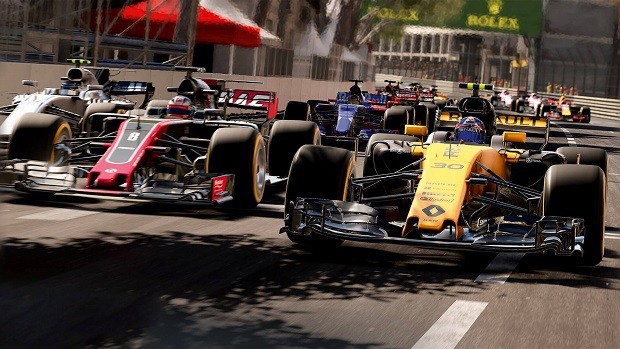Confused about which F1 2018 Car Setup to go forward with? No worries, we have directions on how to construct the perfect F1 2018 Car Setup for your F1 car and how they will apply to different tracks in the game.
In this F1 2018 Car Setup Guide, we have discussed the Setup Menu along with all the main features and components that tie into creating your dream car.
F1 2018 Car Setup
Regardless of the racing circuit you choose, the car setup that we are going to discuss will cover all aspects that go into making a vehicle that excels in every regard.
Moreover, you do not need to worry about the mode you will be playing the race in, as the setup will be operational and suitable for all modes including Career, Online, Time Trial, or League Racing. So let us get into it then.
Fuel Load
You can figure out on your own this one. The more fuel your car has, the more likely your car will suffer from performance issues. Since a greater load will slow down your vehicle a little, we will ask you to go for a minimum load.
Aerodynamics
The changes you make here relate to the overall balance and drag force that your vehicle will encounter during its motion.
This is the only aspect of the Setup that will change drastically from track to track, so do not be shy to head into it for every other race. For a stable and a sufficient top speed car, you may put Front Wing Aero as 1 and Rear Wing Aero to 4.
For medium downforce ranges, try something like 5 for Front and 7 for Rear Wings. These ones apply to tracks in Melbourne, Silverstone, Suzuka and Abu Dhabi.
Now for high downforce, you need to pump the numbers up to 7 for Front and 9 for Rear in the Aerodynamics settings. The tracks that suit this setup are the ones in Singapore, Hungary, and Monaco.
This is because these tracks have quite a lot of bends and corners that you need a high drag force to deal with.
Transmissions
The On and Off Throttle options here function in such a way as to determine how stable your vehicle would be at high speeds. So if you are accelerating down a straight segment of the track, keep the On Throttle closer to 100% for stability.
Likewise, for lower speeds, keep them on the throttle as low as 60% or so. Sometimes the weather conditions will also prompt you to change your transmissions settings, so for wet tracks in rainy weathers, choose 85% On Throttle.
Regarding the Off Throttle, you can keep it at 75% all the time, as it will not have much of an impact on your car.
Suspension Geometry
For most circumstances, go with the maximum angle 0.5 degrees for Rear Toe and 0.15 degrees for Front Toe, while for the Front and Rear Cambers, go for the minimum with -3.5 and -2.0 degrees respectively.
This will give you the best performance and stability including grip and handling.
Suspension
The Front Suspension is to be kept closer to the max in order for the tip or head of the car to be pointier and thus provide better opportunities to turning the cars around the corners.
Keep the Rear Suspension lower e.g. 3 to provide better traction and responsiveness. Front and Rear Anti-Roll Bar should be kept at default, as they do not have any real consequences if changed.
When it comes to the Front and Rear Ride Height, keep the former at 5 and the latter at 6.
Brakes
The Brakes Pressure or the stopping power of the brakes, determine the stopping distance of the car. At wet and slippery roads, you need to keep this closer to 50% and for otherwise dry tracks, keep the pressure at around 75%.
The Front Brake Bias is crucial when it comes to rotating your vehicle when turning a bend in the track. Keep it towards the rear (50%). This directly affects how quickly you complete a lap.
Tyres
Make sure the Front Tyre Pressures are kept around 23 psi and 20 psi for Rear Tyres because the latter will heat up more during the race.
Although for time trials, the Rear Tyre settings can be altered to go a bit higher but for longer races, you do not want to risk out on bursting your tyre.
Since the Rear Tyres have to deal with spinning, rotating and braking, you need to keep the pressure at that minimum.
Weight Distribution
The Ballast or the main weight can be adjusted in its position to affect the overall balance of the car. Keep it close to the Rear at around 8 for the same purpose of being able to rotate the car better and cutting down on the forward downforce.
This is all we have in our F1 2018 Car Setup Guide. If you have anything else to add to the guide, let us know in the comments section below!
